AWS Solutions Architect Associate Certification
Introduction
The KodeKloud AWS Playgrounds
Welcome, Future Solutions Architects! In this lesson, we explore the powerful features of the KodeKloud AWS Playground. Whether you’re refining your cloud skills or preparing for your AWS Solutions Architect exam, this guide will help you navigate and utilize the AWS Sandbox effectively.
When you log in with your subscription, you gain access to multiple environments via the "Playgrounds" section on KodeKloud. Visit KodeKloud Playgrounds to discover a hidden gem that includes:
- Cloud Playgrounds
- Linux Playgrounds
- Kubernetes Environments and related tools
- Container Playgrounds
- HashiCorp Playgrounds
- Machine Learning Playground
- Observability Playgrounds
While not every option directly relates to AWS, selecting AWS reveals the specific services and configurations available in your AWS Sandbox.
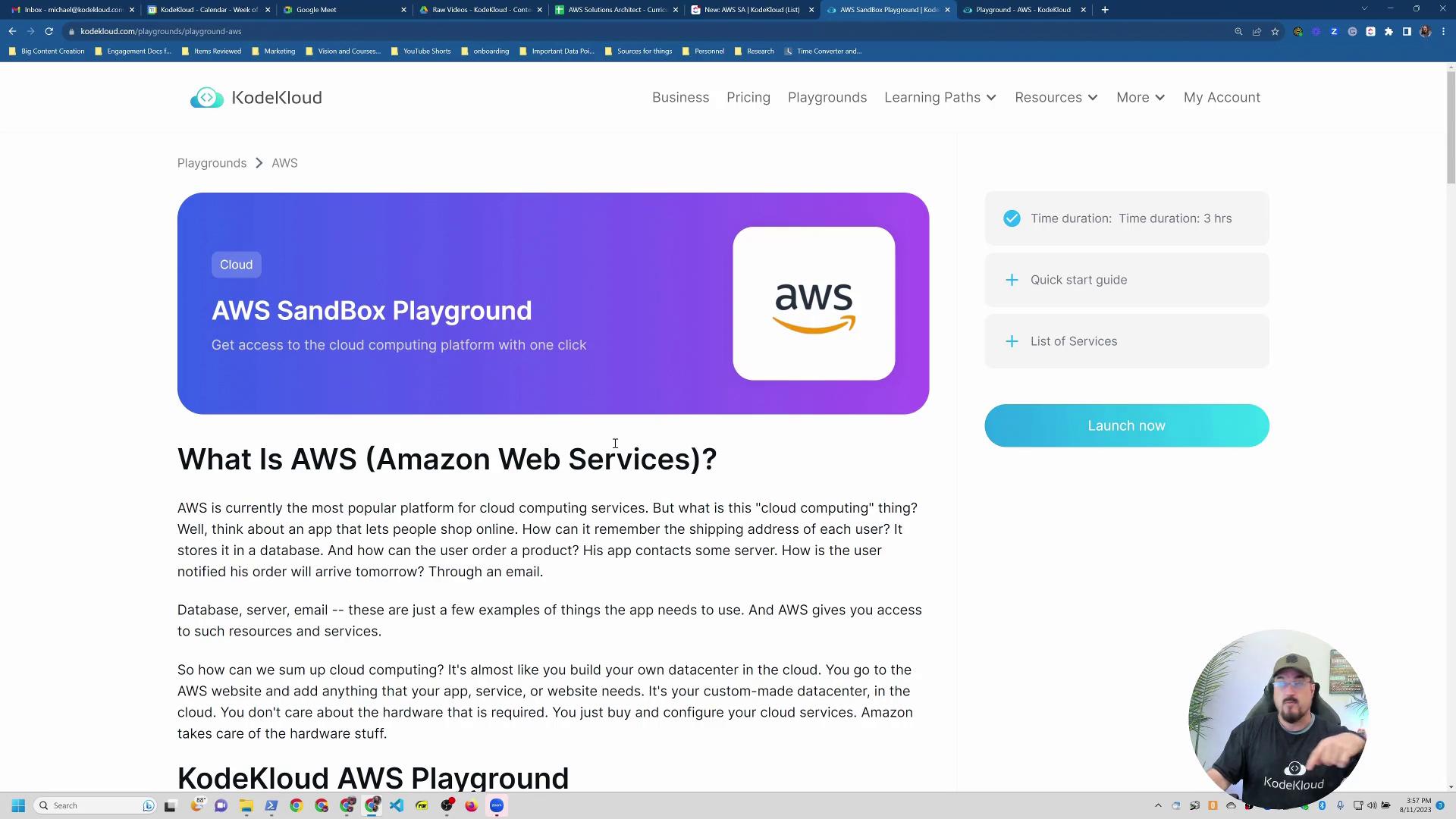
Exploring AWS Services
After clicking on AWS, you will see a detailed list of available services in your AWS playground. These include features to:
- Run virtual machines
- Configure object storage
- Manage RDS
- Deploy EKS
- Utilize services such as DocumentDB, ECR, SNS, and KMS
Note
AWS services related to code management (e.g., CodeStar, CodePipeline, and CodeDeploy) are generally aligned with operations exams rather than the AWS Solutions Architecture exam.
This organized service list eliminates permission errors, letting you experiment freely with every feature.
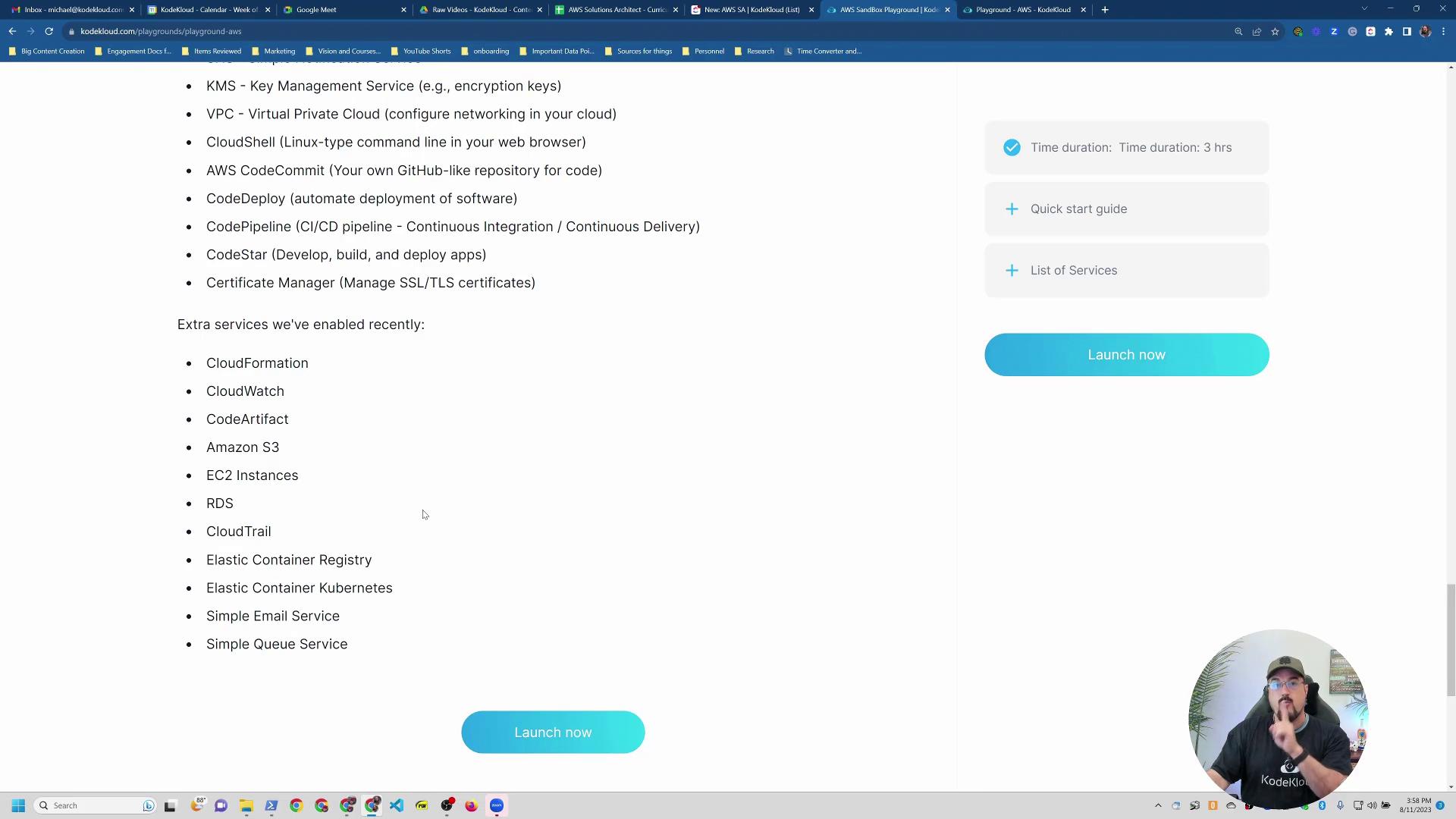
Starting Your Lab
To start using the playground, simply click the Launch Now button. You will be redirected to a page where you can select Start Lab. The lab might already be running if you’ve visited previously. Here, you can also access:
- A list of supported services
- A troubleshooting guide
- Links to community support via Slack or forums
Once the lab starts, you’ll be presented with a console that provides you with the necessary credentials and a link to access the AWS console. Copy the link into your browser and log in with the provided username and password. This setup connects you to a pre-configured IAM user account.

At the IAM sign-in page, the account ID is pre-filled. Simply input your IAM username and password, then click Sign in. You may be prompted to save these details via your password manager. Enjoy full access to the AWS console in a secure sandbox environment that lets you experiment without risk or cost.
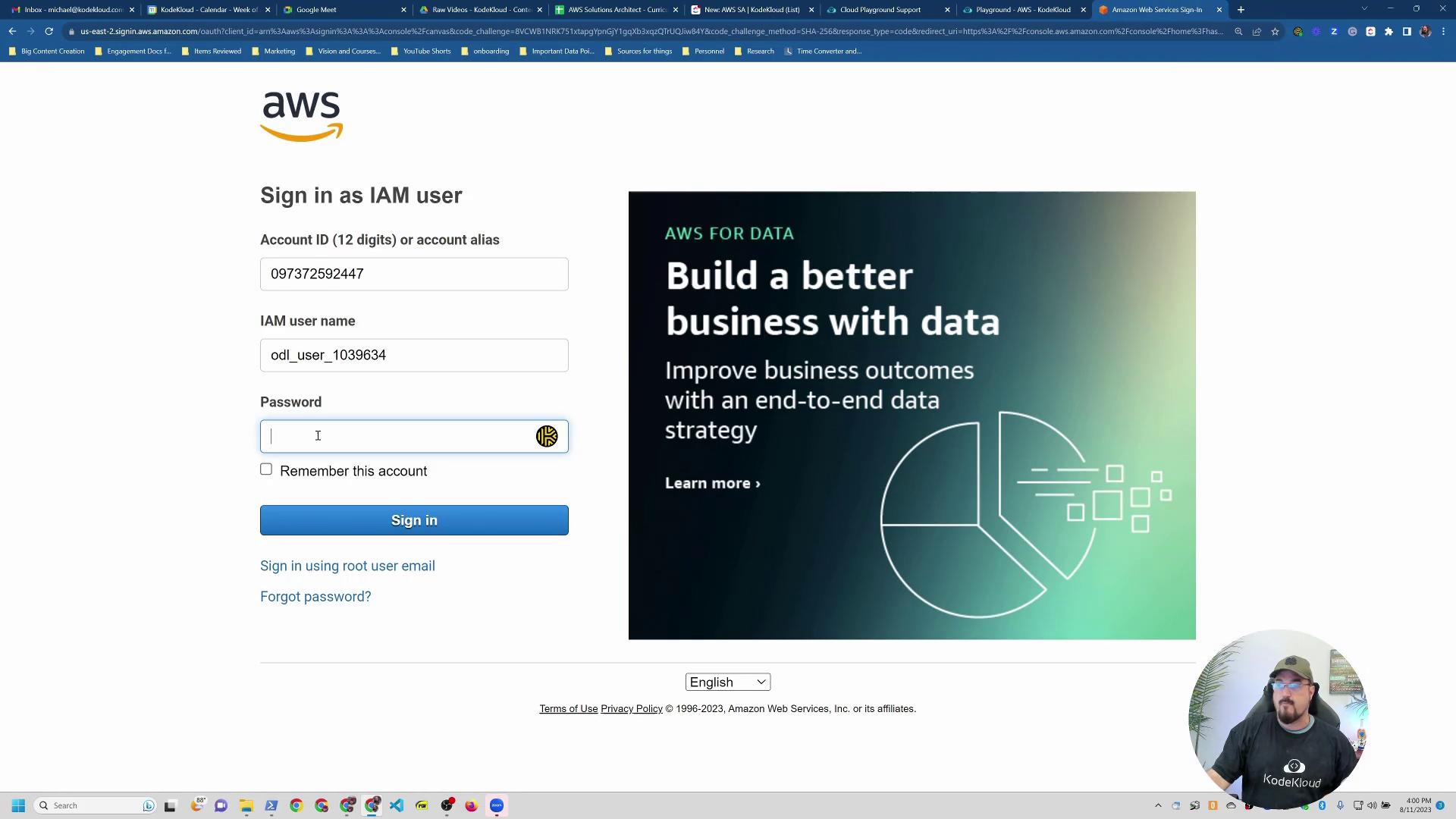
Launching an EC2 Instance
To launch an EC2 instance, navigate to the EC2 dashboard. Use the region dropdown at the top of the page to select your desired region (e.g., US East 1, US West 2, Europe, or AP Southeast 1 in Singapore).

Steps to Launch an EC2 Instance
- Click the "Launch Instance" Button.
- Name Your Instance: For example, "my-test-instance."
- Choose an Amazon Linux 2023 AMI: This AMI is optimized for cloud environments (Ubuntu or RHEL are valid alternatives).
- Select an Instance Type: T2 Micro is a good starting point; you can later switch to a T3 or another instance type as needed.
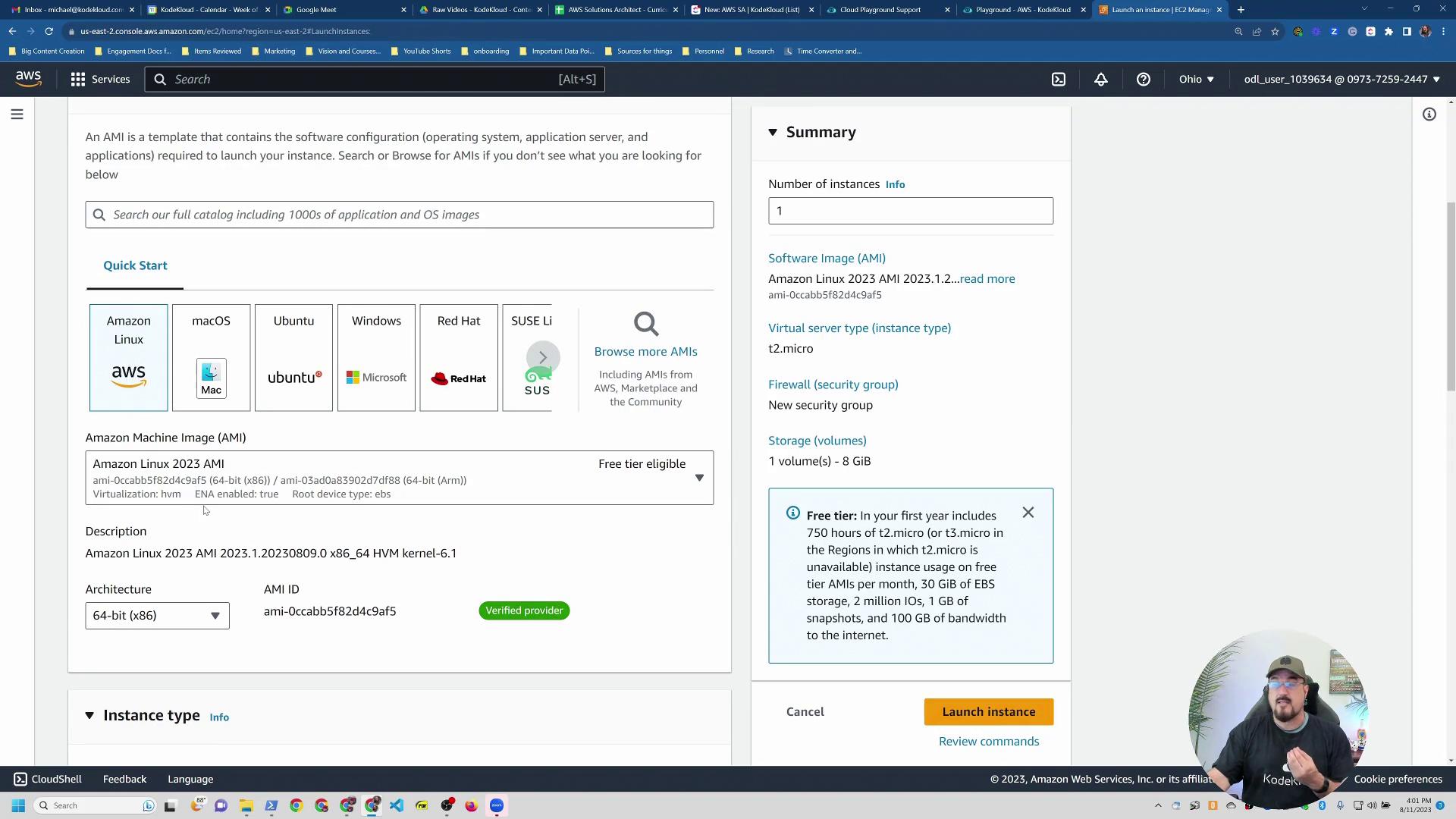
When configuring your instance, review the offered virtual machine types in the playground. Although some settings might reference other cloud platforms (like Azure), ensure you select the AWS-specific settings. If you need more resources, adjust the instance type and storage allocation (for example, change storage from 8GB to 12GB on a GP2 volume).
Creating a Key Pair for Secure Access
Before launching the instance, create a key pair for secure SSH access. AWS uses key pairs in place of traditional passwords for EC2 instances. Follow these steps:
- Create a new key pair (e.g., "test-instance").
- Choose the PEM file format.
- The key pair file will automatically download to your browser.
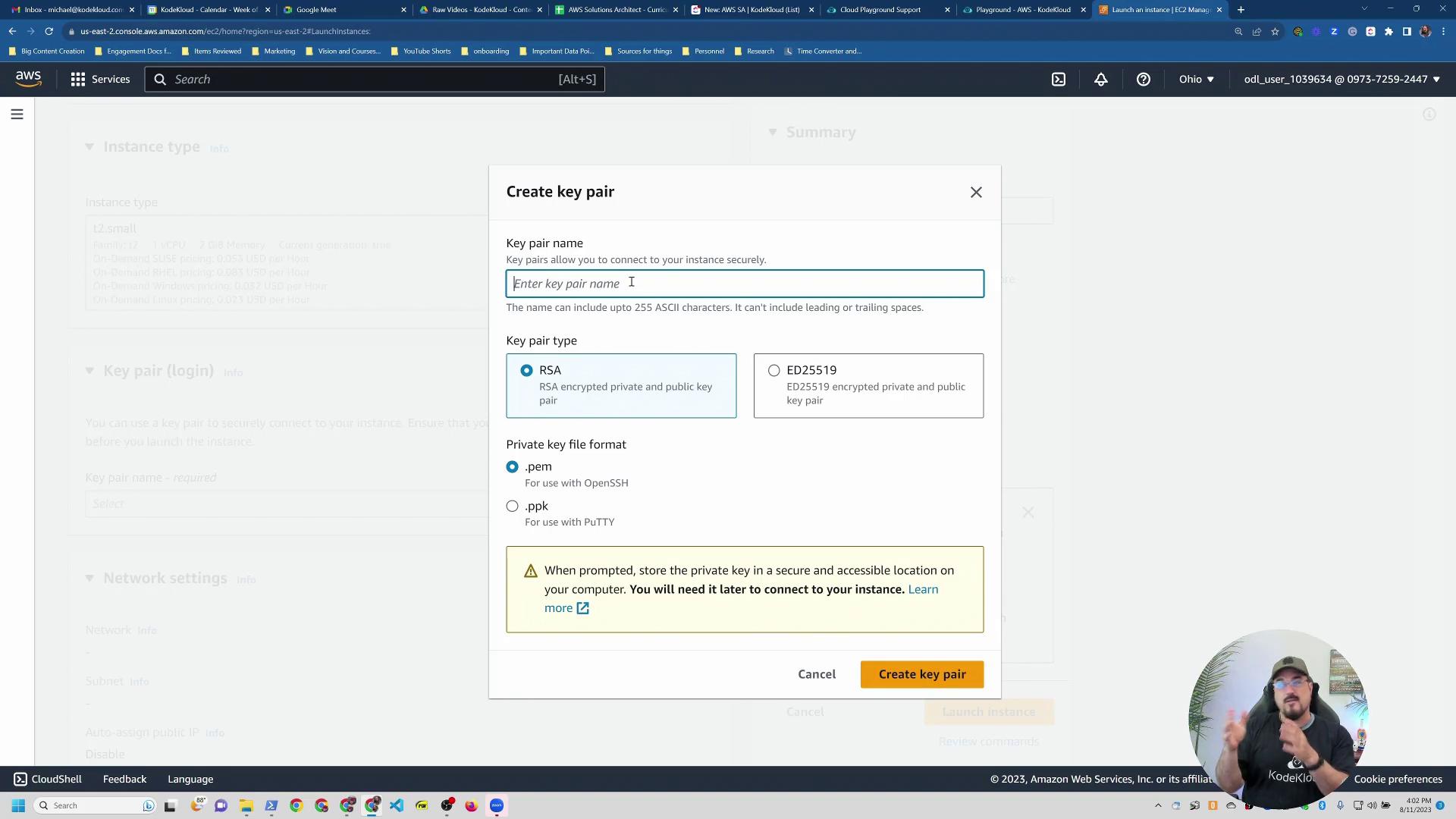
After configuring storage, selecting the proper instance type, and setting up your key pair, proceed to launch your instance. If you receive a notification about missing networking settings (such as a VPC or subnet), follow the prompts to create a new default VPC. Refresh the page to view available subnets, enable automatic IP address assignment, and then complete the instance launch process.
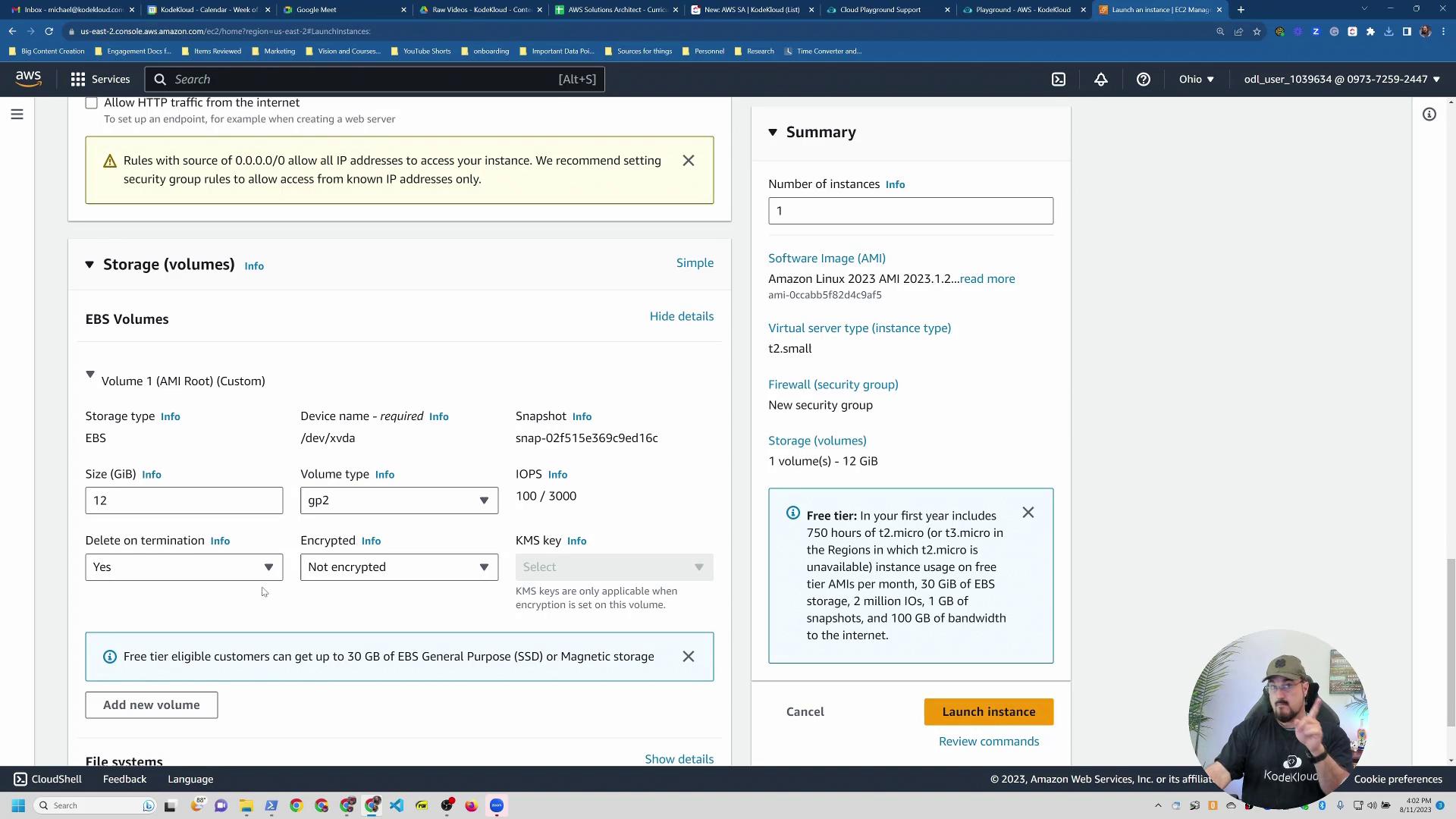
Accessing and Experimenting with AWS Services
Once your EC2 instance is running, use your downloaded key pair to log in. Besides EC2, the AWS Playground allows you to experiment with other AWS services such as RDS and SNS. Remember that some code-specific services are not required for the Solutions Architecture exam, but exploring the entire range enriches your overall understanding.
Tip
If any service is missing or if you need additional practice, revisit the playground and experiment until you feel confident with the platform’s capabilities.
This lesson provided an overview of the AWS services available through the KodeKloud sandbox playground. We hope you enjoy this hands-on experience and build a solid foundation for your future in cloud architecture.
Thank you for reading, and see you in the next lesson!
Watch Video
Watch video content